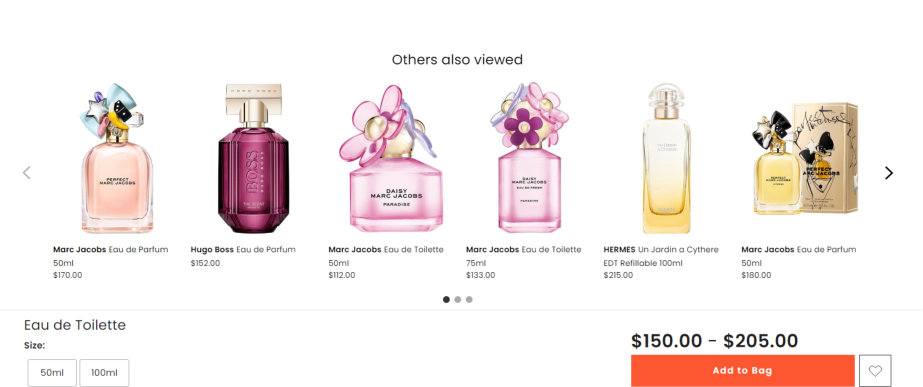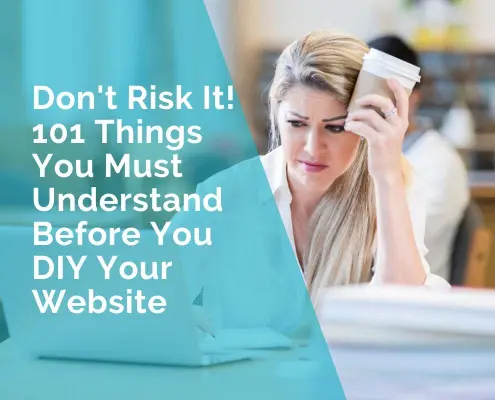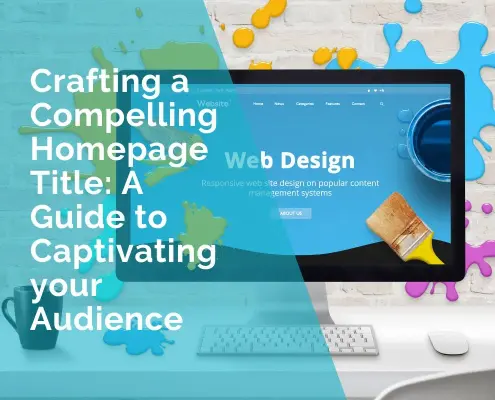1. Product Description
When creating a product description for your website, it’s important to remember who your target audience is. You want to ensure that your product description speaks directly to them and addresses their needs. Begin by clearly stating who the product is for and what problems it solves. This will help potential customers understand if the product is a good fit for them and their needs.
Next, include all the important details about the product. This includes the size, colour, materials, and any other relevant specifications. Make sure to use descriptive language that accurately conveys what the product looks and feels like. If possible, provide images or videos that show the product in action or being used by someone.
Finally, highlight the features and benefits of the product. What makes it stand out from similar products on the market? How will it improve the customer’s life or solve a problem they’re facing? Be sure to use language that is persuasive and helps potential customers see the value in your product.
Below are examples of great descriptions for different products:
Candles:
“Light up your world with our luxurious scented candles. Each candle is crafted with the finest quality wax and infused with carefully selected fragrances to create a unique and captivating aroma. Our candles burn evenly and cleanly, filling your home with a warm and inviting ambience. Whether you’re looking to unwind after a long day or create a cozy atmosphere for a special occasion, our candles are the perfect addition to any room. With a range of scents to choose from, there’s something for everyone. Treat yourself or a loved one to the ultimate indulgence today.”
Flowers:
“Elevate any occasion with our breathtakingly beautiful flowers. Our florists carefully hand-select each bloom for its freshness, vibrancy, and beauty to create stunning arrangements that will leave a lasting impression.
From romantic roses to cheerful sunflowers, our selection of flowers is perfect for any occasion. Whether you’re celebrating a special milestone or just want to brighten someone’s day, our flowers are the perfect way to express your love and appreciation.
With same-day delivery available, surprising someone with the gift of flowers has never been easier.”
Running shoes:
“Introducing the perfect pair of running shoes for athletes of all levels! Our shoes feature a lightweight and breathable design that keeps your feet cool and comfortable during even the most intense workouts.
The durable outsole provides exceptional traction, while the responsive midsole offers a supportive and cushioned ride. With a sleek and stylish look, these running shoes are the perfect combination of performance and fashion. So, lace up and hit the road with confidence!”
Blender:
“Blend up your favourite smoothies and soups with ease with our high-performance blender. With a powerful motor and stainless steel blades, this blender can handle even the toughest ingredients.
The intuitive control panel allows you to choose from different speeds and settings, making it easy to achieve the perfect consistency every time. The large-capacity pitcher is perfect for preparing large batches or entertaining guests. Plus, the sleek and modern design looks great in any kitchen.”
Smartphone:
“Experience the next generation of smartphones with our latest model. Featuring a stunning high-resolution display and a powerful processor, this phone can handle all your daily tasks with ease.
The advanced camera system lets you capture stunning photos and videos, while the long-lasting battery ensures you stay connected all day long. With a sleek and modern design and a range of colours to choose from, this phone is the perfect combination of style and substance. Upgrade your mobile experience today!”
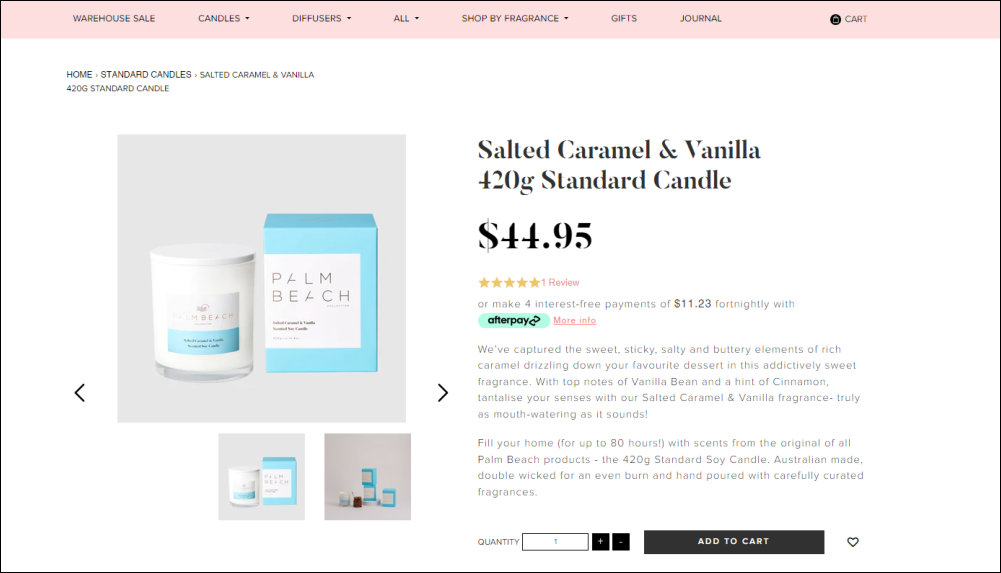
2. Frequently Asked Questions
Frequently Asked Questions (FAQs) are a valuable tool that can help potential customers find the information they need to make an informed decision about purchasing your product. Here are a few reasons why FAQs are so important:
They answer common questions:
FAQs are designed to provide answers to questions that potential customers are likely to have about your product. By addressing common questions upfront, you can save time and reduce the number of customer inquiries you receive.
They provide clarity:
When customers are considering purchasing a product, they want to know exactly what they’re getting. FAQs can help provide clarity on important details such as product features, pricing, and shipping options.
They build trust:
When you provide detailed and accurate information about your product, you are demonstrating that you are a trustworthy and reliable business. This can help build trust with potential customers and make them more likely to make a purchase.
They improve the customer experience:
By including FAQs on your product page, you are making it easier for customers to find the information they need. This can improve the overall customer experience and make it more likely that they will return to your website in the future.
Examples of questions you can use on your Products Page:
Candles Product Page FAQs
- How long will the candle burn for?
- What type of wax is used in the candle?
- What are the dimensions of the candle?
- Is the candle scented? What fragrance(s) are available?
- What is the estimated delivery time for the candle?
- Can the candle be customized with a special message or design?
- Are there any safety precautions I should take when using the candle?
- Is the candle eco-friendly or sustainably made?
- How do I care for and maintain the candle to ensure its longevity?
- Can the candle be used for aromatherapy or relaxation purposes?
Floral Boquet Product Page FAQs
- What flowers are included in the bouquet?
- How many flowers are in the bouquet?
- What is the estimated size and weight of the bouquet?
- How long will the flowers last after delivery?
- Can the bouquet be customized with specific flowers or colours?
- What is the estimated delivery time for the bouquet?
- Can a personalized message be included with the bouquet?
- How should I care for the bouquet to ensure its longevity?
- Are there any safety precautions I should take when handling the flowers?
- Can the bouquet be delivered internationally?
Running Shoes Product Page FAQs
- What is the weight of the shoe?
- What is the drop (difference in height between heel and toe) of the shoe?
- What is the recommended running distance for the shoe?
- What is the estimated delivery time for the shoe?
- Are the shoes suitable for running on pavement or trails?
- Are the shoes true to size, or do they tend to run large or small?
- What type of arch support do the shoes offer?
- What is the cushioning system used in the shoes?
- How should I care for and maintain the shoes to ensure their longevity?
- Can the shoes be returned or exchanged if they don’t fit or meet my expectations?
Blender Product Page FAQs
- What is the motor power of the blender?
- How many speeds does the blender have?
- What type of blades are used in the blender?
- What is the estimated delivery time for the blender?
- What is the capacity of the blender jar?
- Is the blender suitable for crushing ice or blending hot liquids?
- Are the blender parts dishwasher safe?
- What is the warranty on the blender?
- Are there any safety features on the blender, such as a locking lid or automatic shut-off?
- Can the blender be used for making smoothies, soups, or other recipes?
Smart Phone Product Page FAQs
- What is the size of the phone’s screen?
- What is the phone’s storage capacity?
- Does the phone have a headphone jack?
- What is the camera quality of the phone?
- What is the estimated battery life of the phone?
- What is the operating system of the phone?
- Is the phone water-resistant or waterproof?
- Does the phone support wireless charging?
- Are there any special features unique to this phone, such as facial recognition or a fingerprint scanner?
- What is the warranty on the phone, and what type of customer support is available?
3. Product Images and Videos
When it comes to creating a successful product page for your website, the importance of high-quality images and videos cannot be overstated. Quality visual content is essential for showcasing your products in a way that is both engaging and informative. Here are a few reasons why images, videos, and photo galleries are so important:
They help customers visualize the product:
High-quality images and videos provide customers with a clear idea of what the product looks like. This can help them visualize how it will look and feel in real life, which can increase the likelihood of making a purchase.
They showcase product features:
Photos and videos can also be used to showcase the features and benefits of your product. For example, a product video that shows a product being used can help customers understand how it works and what benefits it provides.
They improve the customer experience:
By providing customers with a variety of high-quality images and videos, you are creating a more engaging and informative experience. This can help keep customers on your website for longer periods of time, which can ultimately increase the likelihood of making a purchase.
They increase brand credibility:
When customers see high-quality images and videos on your website, it can help increase their perception of your brand. Quality visual content can make your products appear more professional and can increase the credibility of your brand.
When creating visual content for your product page, make sure to use high-quality images and videos that accurately represent your product. Consider using a variety of images that showcase the product from different angles and in different settings. If possible, include a video that shows the product in use. Finally, consider creating a photo gallery that allows customers to view multiple images of the product in one place.
4. Pricing
Including pricing on your product page is an essential part of an online shopping experience, and it plays a crucial role in the customer’s decision-making process.
Pricing is a significant factor that influences a customer’s buying decision. It can make or break a sale, and omitting it from the product page can result in a loss of potential customers.
When offering discounts, it’s important to be strategic about how they are presented. Discounts should be prominently displayed on the page and clearly communicate the value that customers will receive.
Discounts can create a sense of urgency and motivate customers to make a purchase. Customers may be more likely to buy a product if they feel like they are getting a good deal or if they feel like the discount is only available for a limited time.
Here are some reasons why including pricing on a product page is important:
Transparency:
Displaying pricing provides transparency to customers, enabling them to make informed decisions. Customers appreciate honesty, and providing pricing information upfront can create a sense of trust between the customer and the seller.
Comparison:
Customers often compare products from different sellers before making a purchase, and having pricing information readily available can make the comparison process easier and faster.
Eliminates confusion:
Providing pricing information on the product page eliminates the need for customers to navigate to different pages. This saves time and eliminates confusion, making the shopping experience more pleasant for customers.
Increases conversions:
Including pricing information on the product page can increase the chances of converting a potential customer into a buyer. Customers who have access to pricing information are more likely to make a purchase, as they have all the necessary information they need.
Boosts credibility:
Providing pricing information on the product page can also increase the credibility of the seller. Customers are more likely to trust a seller who is upfront about their pricing and provides transparent information.

5. Availability
Reasons why including availability information on the product page is important:
Helps customers plan:
Availability information helps customers plan their purchase. This can be especially important for time-sensitive purchases, such as gifts or event tickets.
Reduces frustration:
If a customer wants to buy a product and finds out at checkout that it is out of stock, it can be frustrating and disappointing. Including availability can help avoid this situation and reduce frustration for customers.
Increases customer satisfaction:
Providing accurate availability can increase customer satisfaction, as customers feel more confident in their purchasing decision when they have all the necessary details. It also shows that the seller values the customer’s time.
Helps manage inventory:
By keeping the availability information up to date, sellers can avoid overselling and ensure that they have the necessary inventory to meet demand.
Boosts credibility:
Providing accurate availability information can also increase the seller’s credibility. Customers are more likely to trust a seller who is transparent about the availability of their products.

6. Customer Reviews and Ratings
Including customer reviews and star rating is critical in today’s e-commerce environment. It helps build trust between the customer and the seller. Here are some reasons why including customer reviews and ratings is essential:
Provides social proof:
Customer reviews and ratings provide social proof that the product is of good quality and meets the customer’s expectations. When potential customers see positive reviews and ratings, they are more likely to trust the product and the seller.
Offers unbiased opinions:
Customer reviews and ratings are not influenced by the seller’s marketing efforts and provide a more authentic view of the product’s benefits and drawbacks.
Helps customers make a decision:
Customer reviews and ratings help potential customers by providing them with additional information about the product. Customers can learn about the product’s quality, durability, and other features that may not be included in the product description.
Improves product development:
Customer reviews can help sellers improve their products by providing feedback on what customers like and dislike about the product. This feedback can be used to make improvements and provide better customer experiences.
Builds trust:
Including customer reviews and ratings on the product page builds trust between the customer and the seller. It shows that the seller values customer feedback and is transparent about the product’s quality and performance.

7. Additional Trust Icons
When it comes to online shopping, trust is essential. Potential customers need to feel confident that the products they are considering are legitimate and that they can trust the seller.
That’s why it’s important for e-commerce businesses to do everything they can to establish trust with their customers beyond testimonials and product reviews, as they:
Build credibility
Trust icons build credibility by providing evidence that the product or the seller is trustworthy. Customers are more likely to purchase a product from a seller who displays trust icons because they feel more confident in the seller’s credibility.
Increase customer trust
They increase trust by showing that the product or the seller has been recognized or approved by reputable organizations. This can help to reduce customer scepticism and increase their confidence in the product or seller.
Improve conversion rates
Trust icons can improve conversion rates by increasing customer trust and confidence in the product or seller. This can result in higher sales and revenue for the seller.
Enhance brand image:
Trust icons can enhance the brand image by associating the product or the seller with reputable organizations and well-known product logos. This can help to establish the seller’s reputation and brand identity.
If you want to stand apart from your competition include extra trust icons such as:
Case Studies
Including a case study on a product page can be an effective way to showcase the product’s benefits and real-world application. A case study is a detailed analysis of how a particular product has helped solve a specific problem or achieve a particular goal for a customer or business.
By including a case study on a product page, potential customers can see how the product has been successfully implemented and the benefits it has provided to others. This can provide social proof and help build credibility for the product.
Case studies can also help potential customers understand how the product can be used in different contexts and situations. This can be particularly helpful if the product is complex or has multiple use cases.
Media Mentions
Media mentions refer to instances where the product or the brand has been featured in news articles, blogs, podcasts, or other media outlets.
By including media mentions on the product page, businesses can demonstrate that their product has received recognition from reputable and influential sources. This can help increase customer confidence and create a positive impression of the brand.
Influencer Endorsement
An influencer endorsement is when a well-known individual, such as a celebrity or social media influencer, publicly expresses their support for a product or brand.
By including influencer endorsements on the product page, businesses can leverage the influencer’s credibility and authority to increase customer confidence in the product. This can be particularly effective if the influencer is well-respected in the industry or has a large and engaged following.
Awards
Awards are a form of recognition that a product or brand has received for its quality, innovation, or performance.
By including awards on the product page, businesses can demonstrate that their product has been recognized as one of the best in its category. This can help increase customer confidence and create a positive impression of the brand.

8. Related Products
Including related products on a website’s product page is an effective way to increase sales and improve the customer experience. Related products are products that are similar or complementary to the product being viewed and can be displayed in various ways, such as “You may also like” or “Frequently bought together.” Here are some reasons why including related products is important:
Increases sales
Including related products on the product page can help to cross sell complementary products that customers may be interested in purchasing. This can result in higher revenue for the seller and provide a better shopping experience for customers.
Improves customer experience
Including related products can improve the customer experience by providing additional options and information about the product. Customers can learn about complementary products and make more informed purchasing decisions.
Saves time
Instead of searching for related products separately, customers can find them easily on the product page.
Builds customer loyalty
Providing a better shopping experience through related products can build customer loyalty by showing that the seller values the customer’s time and provides helpful suggestions.
Here are examples of related products you can include:
Candles Page Related products
- Candle holders: Offer a selection of stylish and practical candle holders that can complement the candles and enhance their aesthetic appeal.
- Wax melts: Wax melts are a great alternative to candles and can help customers experience different scents in their homes.
- Diffusers: Offer a selection of diffusers that can help customers create a pleasant and relaxing atmosphere in their homes.
- Room sprays: Room sprays can be a quick and effective way to freshen up a room and add a pleasant scent.
- Essential oils: Offer a selection of essential oils that customers can use to create their own blends and customize their fragrance experience.
- Matches: Provide stylish and practical matches that customers can use to light their candles.
- Candle wick trimmers: Candle wick trimmers can help customers maintain their candles and ensure they burn evenly and safely.
- Candle snuffers: Offer a selection of candle snuffers that customers can use to extinguish their candles safely and avoid blowing wax or sparks.
- Candle making kits: Candle making kits can be a fun and educational way for customers to create their own candles and experiment with different fragrances and designs.
- Candle gift sets: Offer a selection of candle gift sets that customers can give as presents to their friends and family or use for themselves.
Wine Page Related Products
- Wine glasses: Offer a selection of wine glasses that can enhance the drinking experience and showcase the wine’s color and aroma.
- Wine decanters: Decanting wine can help it breathe and release its full flavor and aroma. Offer a selection of decanters that customers can use to serve their wine.
- Wine aerators: Wine aerators can help customers aerate their wine quickly and effectively, allowing it to breathe and release its full flavor.
- Wine stoppers: Provide wine stoppers that can help customers preserve their wine and keep it fresh for longer.
- Wine chillers: Offer a selection of wine chillers that can help customers keep their wine at the perfect temperature for drinking.
- Wine bottle openers: Provide wine bottle openers that are easy to use and can help customers open their wine bottles quickly and safely.
- Wine racks: Offer a selection of wine racks that can help customers store their wine bottles safely and stylishly.
- Wine books: Offer a selection of wine books that customers can use to learn more about different types of wine, wine tasting, and food pairings.
- Wine subscription: Provide customers with the option of subscribing to a wine club or monthly wine box to receive regular deliveries of curated wines.
- Wine accessories gift sets: Offer a selection of wine accessory gift sets that customers can give as presents to their friends and family or use for themselves.
Blender Page Related Products
- Blender cups: Offer a selection of blender cups that customers can use to blend their favorite smoothies and drinks and take them on the go.
- Blender bottles: Provide blender bottles that are designed to mix protein powders and supplements quickly and easily.
- Blender jars: Offer a selection of blender jars that customers can use to blend larger quantities of food and drinks.
- Blender tamper tools: Provide blender tamper tools that customers can use to push down ingredients that are stuck in the blender and ensure even blending.
- Blender cleaning brushes: Offer a selection of blender cleaning brushes that customers can use to clean hard-to-reach areas and ensure their blender is always clean and hygienic.
- Blender recipe books: Provide customers with a selection of blender recipe books that can help them get inspired and create a variety of delicious smoothies, soups, and other blended foods.
- Blender accessory kits: Offer a selection of blender accessory kits that can include different blades, lids, and containers to help customers customize their blending experience.
- Blender stands: Provide customers with a selection of blender stands that can help them store their blender safely and keep it within easy reach.
- Blender replacement parts: Offer customers the option to purchase replacement parts for their blender, such as blades and seals, to extend its lifespan and ensure it works properly.
- Blender bundles: Provide customers with the option to purchase a blender bundle that can include accessories, recipe books, and other related products to enhance their blending experience.

9. Call to Action Buttons
Including call-to-action (CTA) buttons on a product page is essential in today’s e-commerce environment. A CTA is a button that prompts the user to take a specific action, such as “Add to Cart,” “Buy Now,” or “Learn More.”
Here are some reasons why including CTA buttons is important:
Increases conversions and boosts revenue:
Including CTA buttons can increase conversions by providing a clear and direct call to action for customers. Customers are more likely to take action when prompted, and CTA buttons make it easy for them to do so.
Improves user experience:
Including CTA buttons can improve the user experience by providing a clear path for customers to take. Customers can quickly and easily navigate through the product page and take the desired action.
Encourages engagement:
CTA buttons encourage customer engagement by prompting them to take action. This can result in higher levels of customer engagement and interaction with the product and the seller.
Here are some examples of call-to-action buttons you can include on your product page:
- Buy Now: A clear and prominent button that directs customers to purchase the product right away.
- Add to Cart: A button that adds the product to the customer’s shopping cart, allowing them to continue browsing the site.
- Compare Products: A button that allows customers to compare the product with other similar products on the site.
- View Details: A button that directs customers to a more detailed product page with additional information, photos, and reviews.
- Sign Up: A button that invites customers to sign up for email newsletters, special offers, or other loyalty programs.
- Share: A button that allows customers to share the product on social media platforms, increasing visibility and potentially driving more traffic to the site.
- Write a Review: A button that invites customers to leave a review of the product, which can provide valuable feedback for future customers and help increase the product’s credibility.
- Ask a Question: A button that allows customers to ask a question about the product, which can help clarify any concerns they may have before making a purchase.
- Request a Demo: A button that directs customers to request a live or virtual demo of the product, allowing them to see it in action before making a purchase.
- Contact Us: A button that provides customers with a direct line of communication with the company, allowing them to ask questions, provide feedback, or request additional information about the product.
10. Shipping Information
Shipping information to be included on a product page includes the cost, delivery time, and method.
Here are some reasons why including shipping information is important:
Transparency
Including shipping information provides transparency to customers about the cost and delivery time of the product. This reduces the likelihood of surprises or hidden costs at checkout.
Convenience
It is convenient for customers as they do not have to navigate through the website to find out the shipping cost and time. This makes the shopping experience easier and more efficient for customers.
Competitive advantage
Gives sellers a competitive advantage over their competitors who may not provide such information. Customers are more likely to choose a seller that provides all the necessary information upfront.
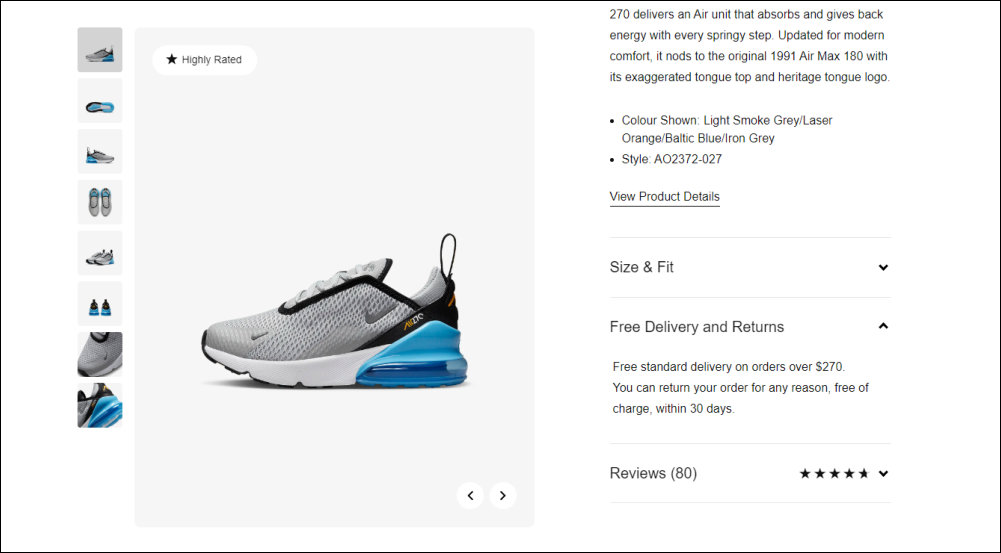
11. Contact Details
Different customers prefer to communicate in different ways. To make it easy for your customers to reach you, provide them with various contact options including:
- phone numbers,
- email address
- physical address including Google Map
- mailing address
- live chat, and
- social media handles.
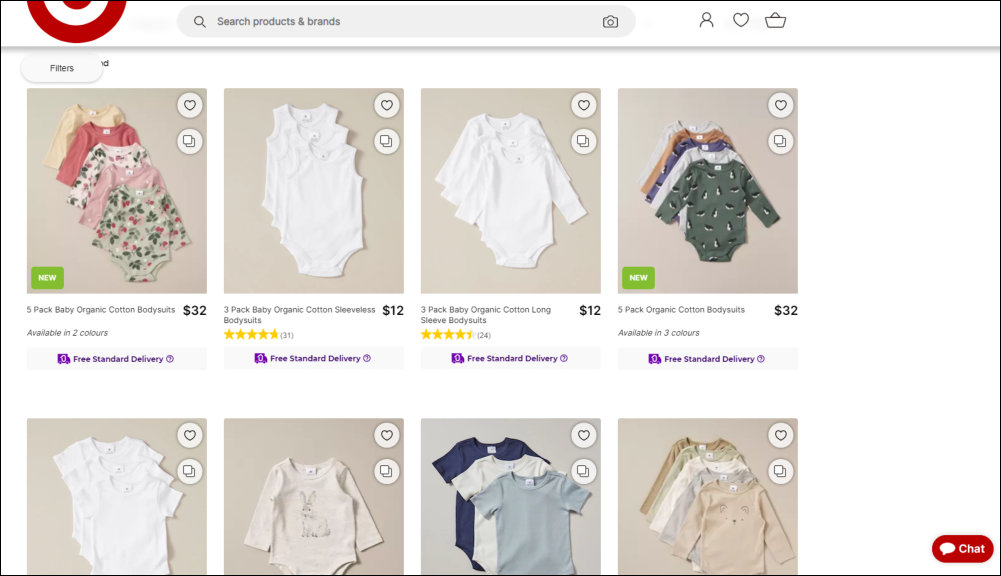
12. Social Media Sharing Buttons
Social media sharing buttons allow customers to share the product or website page on their social media platforms, such as Facebook, Twitter, Instagram, and Pinterest.
Here are some reasons why including social media sharing buttons is important:
Increases visibility
Including social media sharing buttons on the website can increase visibility for the product or website. Customers can share the product or website with their friends and followers, which can lead to increased traffic and exposure.
Builds brand awareness
Social media sharing buttons can help to build brand awareness by allowing customers to share the product or website with a wider audience. This can help to increase the reach of the brand and attract new customers.
Boosts engagement
Social media sharing buttons can boost engagement with the product or website. Customers may be more likely to engage with the product or website if they can easily share it with their social media followers.
Improves credibility
Social media sharing buttons can improve the credibility of the product or website. When customers see that others are sharing and engaging with the product or website, it can increase their trust and confidence in the product or website.
Cost-effective marketing
Including social media sharing buttons is a cost-effective way to market the product or website. By allowing customers to share the product or website, sellers can reach a wider audience without spending money on traditional advertising.
13. Product Guarantee
A product guarantee can come in different forms, such as a warranty, a money-back guarantee, or a satisfaction guarantee. A warranty typically covers defects in materials or workmanship and may include a specific timeframe for repair or replacement.
A money-back guarantee allows customers to return the product for a refund if they are not satisfied with it, while a satisfaction guarantee assures customers that the product will meet their expectations or they can return it for a replacement or refund.
When including a product guarantee on a product page, it’s important to be transparent and clear about what the guarantee entails. This can include the length of the guarantee, the terms and conditions, and any limitations or exclusions. For example, a guarantee may only apply to products that have been used according to the manufacturer’s instructions or that have not been damaged by misuse or neglect.
14. Security Information
Security is a critical consideration for any website that sells products or accepts payments online. Customers expect their personal and financial information to be protected, and failure to provide adequate security measures can lead to a loss of trust and revenue. Here are some important security measures to include on a page that sells products:
SSL Encryption
Secure Sockets Layer (SSL) encryption is a standard security protocol for establishing encrypted links between a web server and a browser. This encryption protects sensitive data, such as credit card numbers and login credentials, from being intercepted by hackers or malicious actors. An SSL certificate can be identified by the “https” prefix in the website address and the lock icon in the browser.
Payment Gateway Integration
A payment gateway is a service that securely authorizes credit card payments and transfers funds between the customer and the seller. Payment gateway integration ensures that customers can safely and securely enter their payment information on the website. Popular payment gateways include PayPal, Stripe, and Authorize.net.
Two-Factor Authentication
Two-factor authentication is a security feature that requires users to provide two forms of identification to access their accounts. This provides an extra layer of security and reduces the risk of unauthorized access to customer accounts.
Secure Login
Secure login processes, such as CAPTCHA and password complexity requirements, can prevent hackers from gaining access to customer accounts. These measures can also prevent fraudulent activity, such as account takeovers and password-guessing attacks.
Secure Hosting:
Hosting the website on a secure server is essential for protecting customer data. The server should be regularly updated with security patches and firewalls to prevent unauthorized access.
Frequently Asked Questions about Product Pages
How can I optimize my product pages for search engines?
You can optimize your product pages for search engines by implementing the following strategies:
- Conduct keyword research: Use tools such as Google Keyword Planner or SEMrush to identify keywords and phrases that are relevant to your product and target audience.
- Include keywords in your product title and description: Incorporate your target keywords naturally into your product title and description, making sure they sound natural and readable.
- Optimize your images: Use descriptive and relevant file names for your product images and include alt tags with target keywords.
- Ensure fast page load speed: Google considers page load speed as an important factor for search engine rankings. Use optimized images and consider using a content delivery network (CDN) to ensure faster page load times.
- Use structured data: Include structured data on your product pages to help search engines understand the content on your page better.
- Build quality backlinks: Having high-quality links pointing to your product pages can improve their search engine rankings.
- Use internal linking: Include internal links to related products or category pages on your site to help search engines understand the relationship between your products.
What should I do if I don’t have any product reviews?
If you don’t have any product reviews, there are several things you can do to encourage your customers to leave feedback:
- Offer incentives: Offer a small discount or free gift to customers who leave a review.
- Follow up with customers: Send a follow-up email to customers asking them to leave a review after they have received and used the product.
- Make it easy to leave a review: Include a direct link to the review section on your product page and ensure the review process is quick and easy.
- Showcase reviews from other platforms: If you have reviews from other platforms, such as Google or Yelp, showcase them on your product page to build trust with potential customers.
- Ask for feedback in your packaging: Include a card or note in your product packaging asking customers to leave a review.
- Reach out to influencers: If you work with influencers or bloggers, ask them to review your product and share their thoughts on their platforms.
How can I use analytics to improve my product pages?
Analytics can provide valuable insights into how visitors interact with your product pages, allowing you to make data-driven improvements. Here are some ways to use analytics to improve your product pages:
- Track page views: Use analytics to track the number of page views each product page receives. This can help you identify which products are most popular and adjust your marketing efforts accordingly.
- Analyze user behavior: Use tools like heatmaps and session recordings to understand how users interact with your product pages. This can help you identify areas where users are getting stuck or dropping off, allowing you to make improvements to increase engagement and conversion rates.
- Monitor bounce rates: Bounce rates indicate the percentage of users who leave your website after only viewing one page. High bounce rates on product pages may indicate that the page is not meeting users’ expectations or needs, which may require adjustments to improve engagement.
- Analyze conversion rates: Use analytics to track the number of conversions (i.e., purchases) that occur on each product page. This can help you identify which pages are converting well and which ones may need improvement.
- Monitor referral sources: Use analytics to identify which sources are driving the most traffic to your product pages, such as search engines, social media, or referral sites. This can help you optimize your marketing efforts and focus on the most effective channels.
What is the ideal length for a product page?
There is no specific ideal length for a product page as it depends on various factors such as the type of product, target audience, and marketing goals. However, it’s generally recommended to aim for a length that provides enough information for customers to make informed purchasing decisions without overwhelming them with unnecessary details.
A product page should include essential information such as product features, benefits, specifications, pricing, and images or videos. Including additional information such as customer reviews, frequently asked questions, and related products can also enhance the page’s value.
In terms of length, a product page should be long enough to provide all the necessary information but not so long that it becomes tedious to read. In general, a length of 500 to 1000 words is considered a good target. However, the length may vary based on the complexity of the product and the amount of information required to make an informed purchase decision.
Ultimately, the focus should be on providing a high-quality, informative product page that meets the needs of your target audience, rather than adhering to a specific length requirement.
Should I use pop-ups or overlays on my product pages?
Using pop-ups or overlays on your product pages can be an effective way to draw attention to specific promotions, offers, or announcements, and can also help to increase engagement and conversions. However, it’s important to use them judiciously and consider the user experience.
Some users may find pop-ups or overlays intrusive or annoying, which can lead to a negative user experience and potentially drive them away from your site. Therefore, it’s important to use them sparingly and ensure that they are relevant to the user’s needs and interests.
Here are some best practices to consider when using pop-ups or overlays on your product pages:
- Use clear and concise messaging that communicates the value of the offer or promotion.
- Use a design that is visually appealing and matches the overall look and feel of your website.
- Set triggers that are relevant to the user’s behavior on the site, such as time on page or scroll depth.
- Make it easy for users to close the pop-up or overlay if they are not interested.
- Test different variations of the pop-up or overlay to determine what works best for your audience.
How can I promote my products online?
There are many ways to promote your products online. Here are some effective methods:
- Social media marketing: Social media platforms like Facebook, Instagram, Twitter, and LinkedIn are great places to promote your products. You can create a business profile, post product photos and descriptions, and engage with your audience.
- Content marketing: Create high-quality content that showcases your products and provides value to your target audience. This can include blog posts, videos, infographics, and more.
- Email marketing: Build an email list and send newsletters, promotions, and product updates to your subscribers.
- Influencer marketing: Partner with influencers in your niche to promote your products to their followers.
- Paid advertising: Use platforms like Google Ads, Facebook Ads, and Instagram Ads to create targeted ads that promote your products to your ideal customers.
- Affiliate marketing: Partner with affiliates who promote your products and earn a commission for each sale.
- Search engine optimization (SEO): Optimize your website and product pages for search engines so that potential customers can find your products when they search for related keywords.
The information that is included on a product page can significantly impact the success of an online store. By providing customers with accurate and detailed product descriptions, pricing, availability, customer reviews, related products, shipping information, and security measures, sellers can create a positive shopping experience and increase customer trust and confidence.
Including effective call-to-action buttons and social media sharing buttons can also help to boost engagement and promote brand awareness. By paying attention to the details and ensuring that all essential information is included on a product page, sellers can improve their chances of making sales and building a loyal customer base.
 Ivana Katz from Websites 4 Small Business is an award winning web designer who builds websites that build your business. She provides unbeatable web design services to fit your budget.
Ivana Katz from Websites 4 Small Business is an award winning web designer who builds websites that build your business. She provides unbeatable web design services to fit your budget.
The end result? Professional, custom-made sites that give your business the extra oomph it needs to stand out from the competition and make an impact.
Whether you’re a brand-new business or an established one ready to improve your digital presence, Ivana makes it easy to get your business online very quickly. Her websites are professional, tailored to fit your budget, and give your business a serious boost.
Download your FREE copy of “Ultimate Website Design Secrets Blackbook – 10 Bulletproof Strategies for Designing an Outrageously Successful Website”



